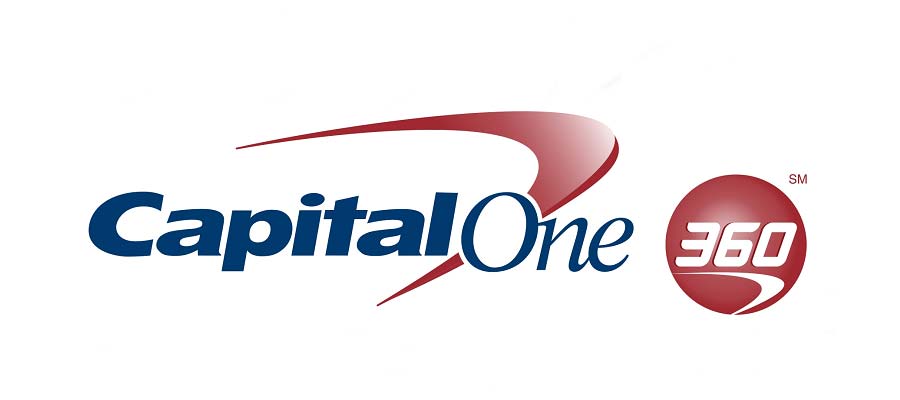Looking for a robo-advisor that offers more than just automation? Empower sets itself apart by blending technology with human expertise, making it a top choice for investors who want professional financial guidance without the hassle of managing everything themselves.

Unlike many digital investment platforms designed for beginners, Empower caters to those with significant assets. The platform requires a $100,000 minimum investment and provides a mix of algorithm-driven investing and direct access to financial advisors. This hybrid approach helps clients optimize their portfolios, minimize taxes, and create personalized wealth strategies.
With over 2.7 million users and $16 billion in assets under management, Empower has established itself as a strong contender in the wealth management space. But is it worth the fees? And how does it compare to other investment platforms? Let’s break down its features, account options, and whether it’s the right fit for your financial goals.
Empower Investment Plans & Account Tiers
There are three different plans available at Empower, which are divided up based on the amount of investable assets you have. If you know how much you’d like to invest, find the correct category to learn about the benefits and services you’d receive from Empower. Then keep reading to learn more about the fee structure.
Investment Service Plan
The first plan is targeted for those with up to $200,000 in assets to be invested. Services include access to a financial advisory team, a tax-efficient ETF portfolio, dynamic tactical weighting, 401k advice, and cash flow & spending insights.
You’ll also get to use Empower’s free wealth management tools. You do, however, need a minimum of $100,000 to get started investing with Empower.
Wealth Management Plan
The next option is the Wealth Management plan, for those with investable assets between $200,000 and $1 million. You get access to all the benefits from the Investment Service plan, plus several others.
The Wealth Management service includes two dedicated financial advisors, customizable stocks and ETFs, a full financial and retirement plan, college savings and 529 planning, tax-loss harvesting and tax location, and financial decisions support.
The financial decisions support refers to help with insurance, home financing, stock options, and compensation. Also, note while your financial advisors can help you plan for investment accounts like a 401k for retirement or a 529 for college savings, Empower doesn’t actually offer these accounts.
Private Client Plan
If you invest more than $1 million, you qualify for the Private Client Plan. Again, you receive all the perks of the previous two plans, in addition to several more.
To begin, you’ll get priority access to CFP, financial advisors, investment committee, and support, plus an investment portfolio mix of ETFs, individual stocks, and individual bonds (in certain situations).
You also receive family tiered billing; private banking services; estate, tax, and legacy portfolio construction; and donor-advised funds. Empower also offers private clients a private equity and hedge fund review, deferred compensation strategy, as well as estate attorney and CPA collaboration.
Empower Fees & Account Options Explained
Empower follows a tiered fee structure, meaning the more you invest, the lower your fees. Here’s a quick breakdown:
- Up to $1 million: 0.89%
- Next $3 million: 0.79%
- Next $2 million: 0.69%
- $5 million after that: 0.59%
- $10 million+: 0.49%
Unlike some robo-advisors, Empower doesn’t charge additional fees for account setup, transfers, or closing your account. The only costs you’ll pay are based on the assets they manage.
Types of Accounts Supported
Empower offers various investment accounts, including:
- Individual & Joint Brokerage Accounts
- Retirement Accounts: Roth IRA, Traditional IRA, SEP IRA, and Rollover IRA
- Trust Accounts
The platform focuses on liquid investments, meaning your funds aren’t locked up in complex assets. If you need to withdraw money, most trades settle within one to three days, allowing for quick access to cash when necessary.
All assets are held by Pershing Advisor Solutions, a subsidiary of BNY Mellon, one of the largest custodians in the U.S. with over $1 trillion in global client assets.
Tax Optimization Strategies
Empower uses several techniques and strategies to ensure clients are optimizing their taxes on investments. First, they entirely avoid mutual funds, which they regard as inefficient for tax purposes. Their asset location is personalized whether you have taxable accounts or retirement accounts.
For example, Empower typically places high-yielding accounts and fixed income into a tax-deferred or exempt account. REITs are also generally placed in a retirement account because they pay nonqualified dividends.
Finally, Empower utilizes tax-loss harvesting, meaning they use individual securities that realize losses and can, therefore, offset gains or provide a tax deduction.
Special Features
Empower offers a suite of free financial tools, even if you’re not a paying client. By signing up, you can link your bank accounts, credit cards, and investments for a comprehensive financial checkup.
Key Tools Available
- Investment Checkup: Analyzes your asset allocation and suggests optimizations.
- Fee Analyzer: Identifies hidden fees in your investment accounts.
- Retirement Planner: Projects your long-term savings with best- and worst-case scenarios.
- 401(k) Analyzer: Evaluates employer-sponsored retirement plans for inefficiencies.
- Net Worth Tracker: Provides a real-time snapshot of your overall wealth.
These tools are accessible through Empower’s financial dashboard, available on both the mobile app and website. Even if you don’t invest with Empower, you can still use them to fine-tune your financial strategy.
Investment Strategy and Tools
As mentioned, Empower implements five distinct strategies for investing. Learn a bit more about each one to get a better grasp of how your money would be managed by this advisor.
Modern Portfolio Theory
The prime directive here is to create an efficient portfolio for clients while yielding the highest possible return for the lowest possible risk.
Empower works with six asset classes to provide this equilibrium, which are all meant to be liquid and broadly investible. These asset classes are U.S. stocks and bonds, international stocks and bonds, alternatives (including ETFs and commodities), and cash for liquidity.
Personalized Asset Allocation
There’s a reason the company is called Empower: they understand that no two investors are exactly alike. That’s why they look at your individual data and financial goals to balance your portfolio’s risk and growth.
They use a proprietary Retirement Planner software that analyzes your spending and savings habits in addition to your projected income. This helps you determine what your financial future looks like and what you may need to change to reach your future goals.
Tax Optimization
We mentioned earlier that Empower optimizes your taxes by using tax-loss harvesting and asset location, as well as avoiding mutual funds.
In fact, these steps could boost your annual returns by as much as 1%. While many financial advisors use one or two of these tactics, Empower offers a truly robust strategy to make your portfolio more tax efficient.
Equal Sector and Style Weighting
Empower’s strategy for diversification involves equalizing the composition of your portfolio by sector, size, and style.
The goal is to prevent bubbles and other volatile conditions from adversely affecting your investments too much. Likewise, they don’t rely on a few large companies, but instead spread out U.S. stock investments between 70 and 100 different stocks.
Disciplined Rebalancing
Your portfolio receives a daily review for any potential rebalancing needs. For high-level assets, they’re typically rebalanced when they deviate more than a few percentage points from the target.
Specific securities receive a smaller margin and are reviewed after just a 0.5% move from the target. Having a systematic review allows you to maximize your ability to buy low and sell high.
Is Empower right for you?
Empower is a strong choice for high-net-worth investors who want a mix of automation and personalized financial guidance. The platform offers comprehensive wealth management, tax optimization, and direct access to financial advisors, making it ideal for those with complex financial needs.
However, the $100,000 minimum investment and higher fees compared to some robo-advisors may not be ideal for newer investors or those looking for a low-cost, hands-off approach. If you prefer a platform with lower minimums or flat fees, other options may be a better fit.
For those who qualify, Empower provides a premium investing experience with access to human advisors, in-depth financial planning, and robust investment tools—all in a streamlined, digital-first platform.




